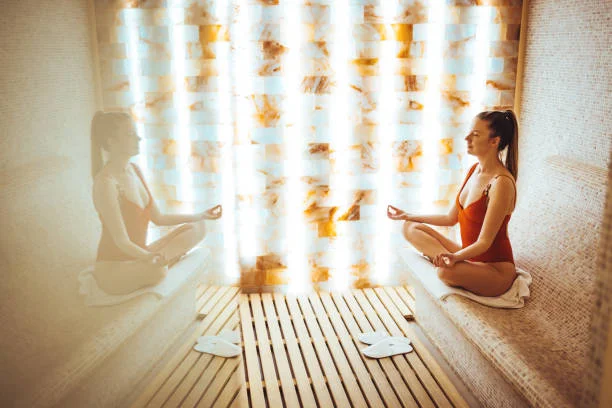A Modern Shift in Sauna Design
Saunas have long been a cornerstone of wellness traditions. From the early bathhouses of Scandinavia to today’s home wellness spaces, they’ve remained a symbol of restoration and balance. For centuries, the experience was defined by wood-lined interiors and enclosed spaces, where warmth and seclusion created an environment of healing. While this classic design still holds its value, a new architectural innovation is reshaping the way people think about sauna culture. Glass saunas, with their open views and elegant transparency, are redefining the wellness experience.
This shift is more than aesthetic. The integration of glass into sauna design represents a blending of tradition and modernity, bringing nature, light, and openness into a practice once characterized by enclosure. It reflects a growing desire to make wellness not only about the body but also about connection to surroundings, to nature, and to a sense of freedom.
Want more on this? Here’s a piece that pairs perfectly.
The Allure of Light and Openness
One of the most striking features of glass saunas is the atmosphere they create. Unlike traditional wooden structures, which are often dim and inward-focused, glass saunas embrace openness. Natural light floods the space, and the outside world becomes part of the experience. Whether placed in a garden, overlooking a lake, or positioned in a mountain retreat, the transparent design allows the user to remain immersed in the environment while enjoying the heat and relaxation of the sauna.
This connection to the outdoors is not just visually appealing—it has measurable effects on well-being. Studies show that exposure to natural light and views of nature reduce stress, lower blood pressure, and improve mood. By opening the sauna to its surroundings, glass design enhances the restorative effects, turning each session into a multisensory experience. A meta-review by the Global Wellness Institute highlights that frequent sauna use (several times per week) is associated with significant decreases in risks of stroke, hypertension, heart attacks, and even dementia—underscoring the powerful intersection of environment, wellness, and design.
Blending Architecture and Wellness
The rise of glass saunas demonstrates how wellness design is increasingly tied to architecture. These saunas are not simply functional they are statement pieces that complement the spaces they occupy. The clean lines and expansive windows merge seamlessly with modern outdoor living trends, where homes and gardens are designed as fluid extensions of each other.
At the same time, the use of glass requires careful craftsmanship. Heat retention, safety, and durability are essential factors in creating a sauna that is both beautiful and effective. This marriage of form and function shows how wellness products are evolving to meet higher expectations, where design excellence and health benefits go hand in hand.
A Different Kind of Privacy
At first glance, the idea of a glass sauna might seem contradictory to the sense of seclusion people often associate with traditional designs. Yet, in practice, they offer a unique kind of privacy. Strategic placement whether in a quiet garden corner or facing a natural view ensures that the openness feels liberating rather than exposing.
The transparency creates an environment where people feel connected without being confined. It’s less about hiding away and more about embracing openness as part of the relaxation process. For many, this feels more natural, less isolating, and ultimately more enriching than the enclosed alternatives.
The Evolution of Wellness Rituals
The introduction of glass saunas is part of a broader evolution in wellness rituals. People are no longer satisfied with wellness practices that focus solely on utility. They want experiences that feel luxurious, immersive, and personally meaningful. The sauna session, once a straightforward practice of heat therapy, is becoming something richer: a moment where architecture, nature, and well-being intersect.
This is where the Victoria Sauna becomes an example of how design innovation transforms tradition. With its panoramic glass panels, it creates an environment where the outdoors and indoors merge seamlessly. Sitting inside, one is surrounded by warmth while still gazing out at the sky, trees, or water beyond. It embodies the idea that wellness is not just about the internal state but also about how we interact with the world around us.
Expanding the Sensory Experience
Glass saunas also change how people engage their senses during a session. In traditional designs, the focus is almost exclusively on heat and the tactile feel of wood. While this remains deeply restorative, glass adds a visual dimension. Watching snow fall outside while surrounded by warmth, or seeing the sun set while steam rises around you, creates moments of profound sensory harmony.
This layered experience appeals to a growing wellness audience that values mindfulness and presence. Each session becomes a chance not only to relax physically but to ground oneself in the beauty of the moment.
Sustainability and Modern Wellness
Another dimension driving the rise of glass saunas is the integration of sustainable building practices. Modern wellness buyers are more eco-conscious, seeking products that align with environmental values. Glass saunas, often paired with responsibly sourced wood and efficient heating systems, are part of this movement toward eco-luxury.
The durability of the materials ensures longevity, reducing waste and making them a long-term investment rather than a short-lived indulgence. When paired with outdoor settings, they also encourage greater appreciation of natural surroundings, reinforcing the link between personal well-being and environmental responsibility.
From Individual Relaxation to Social Connection
While many see saunas as a place for quiet solitude, glass designs have also made them more inviting for shared experiences. The openness makes the space feel larger, more communal, and less confined. Friends and family can enjoy the sauna together while still feeling connected to the outdoors.
In this sense, glass saunas support the social aspect of wellness that is becoming increasingly important in modern life. They create opportunities for conversation, laughter, and shared relaxation, turning what was once a solitary ritual into a collective experience.
Looking Toward the Future of Sauna Culture
The wellness industry continues to evolve rapidly, driven by a blend of tradition, innovation, and lifestyle aspirations. Glass saunas represent a forward-looking vision of this culture. They respect the time-honored practice of sauna bathing while reimagining it for a modern audience that values openness, connection, and design.
As more people embrace wellness as part of daily living, saunas are no longer confined to spas or holiday retreats. They are entering private gardens, residential properties, and even communal spaces, with glass designs leading the way in shaping how these wellness environments look and feel.
Conclusion: A Transparent Transformation
Glass saunas are more than a design trend. They symbolize a shift in how wellness is experienced bringing together heat, light, architecture, and nature in a way that transforms both body and mind. By creating openness where there was once enclosure, they invite a new kind of relaxation, one that feels expansive and deeply connected.
The transformation of sauna culture through glass designs reflects a larger truth: wellness is evolving to embrace beauty, sustainability, and inclusivity. With innovations like the Victoria Sauna, the future of relaxation looks brighter, clearer, and more inspiring than ever.
Discover fresh content every day—visit 2A Magazine.







